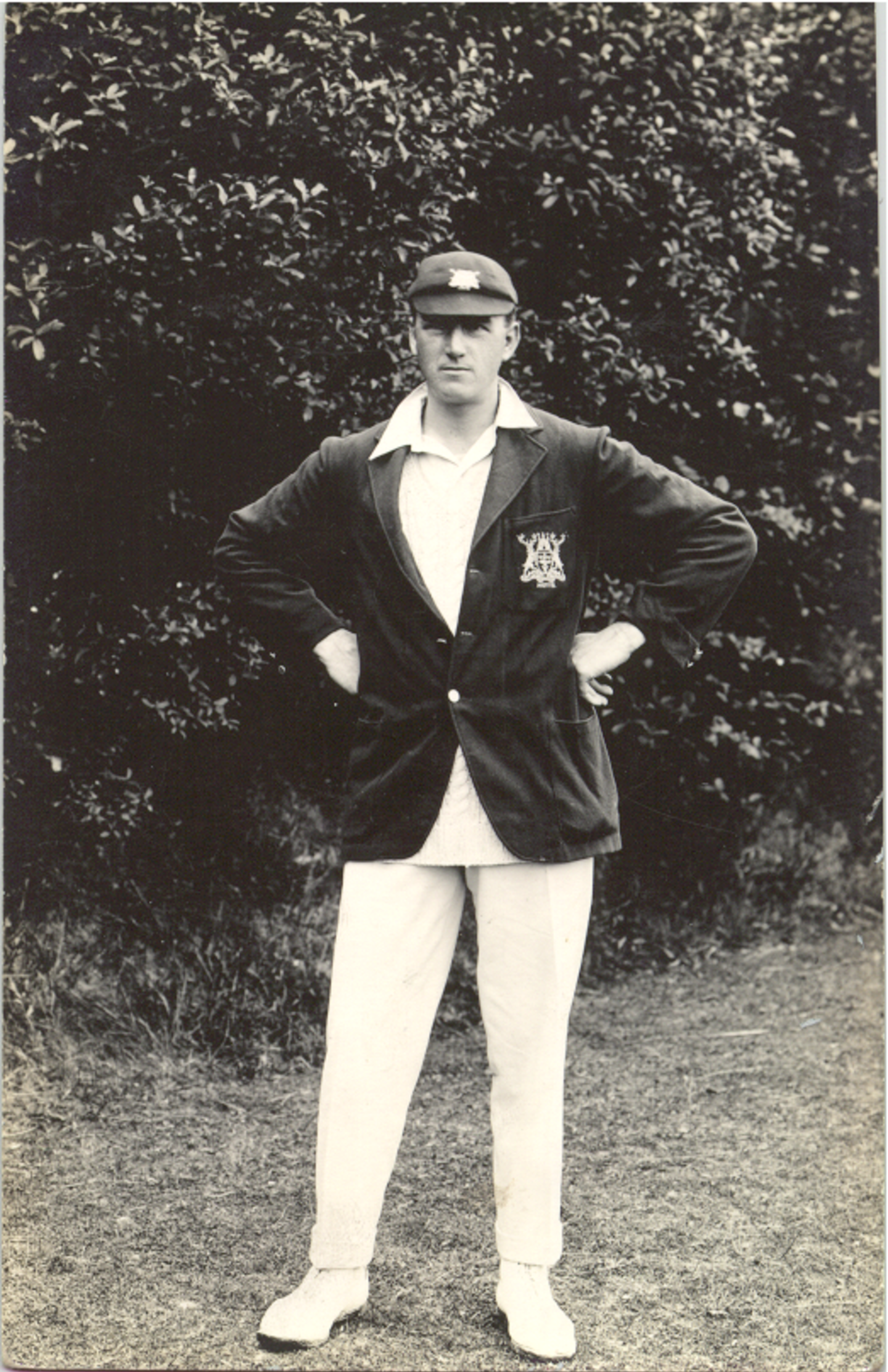William 'Dodge' Whysall scored more runs for Nottinghamshire between 1926 and 1930 than any other batsman had ever attained in five consecutive seasons. Whysall's total of 2,620 in 1929 remains the largest aggregate for Nottinghamshire in a single season and his tally of nine centuries in 1928 is also a County record.
It is quite possible that Whysall himself might have broken both these records but the final Nottinghamshire match of 1930 v Worcestershire at Trent Bridge proved to be his last in First-Class cricket.
Within a few weeks of this match an accident befell Whysall which proved fatal. He slipped whilst at a dance injuring his elbow, septicemia resulted and though given a blood transfusion, he died in hospital in Nottingham on 11 November 1930. He was just 43 years old.
His funeral in Mansfield was the largest in living memory in that town, and he was buried in the cemetery there.
Born on 31 October 1887 in Woodborough but residing in Mansfield for most of his life, Whysall played for Nottinghamshire Second XI in 1909 and 1910 and achived a modicum of public recognition in the latter season when he played two brilliant innings of 140 and 38no against Staffordshire at Trent Bridge, S F Barnes, the famous England bowler, being in the Staffordshire side.
He batted right-handed, bowled, very occasionally, at medium pace and kept wicket for his county, though not for England.
Whysall made his First-Class debut for Nottinghamshire v Derbyshire at Blackwell on 18 August 1910; opening the Nottinghamshire innings with George Gunn, Whysall scored 50 and added 100 for the 1st wicket - the first of 40 such partnerships with Gunn.
Hailed as a future England batsman, Whysall's progress was exceedingly slow. In 1910-11 he played in seven First-Class matches, his appearances being restricted by a broken leg. In 1912, he played only twice, and it was not until 1914 that he was a regular member of the Nottinghamshire side.
In the initial match of that season v MCC at Lord's he scored his maiden century and with Garnet Lee added 175 for the third wicket. Whysall did not appear at all in 1919 but rejoined the Trent bridge staff in 1920 and won a place in the XI almost immediately; by the middle of the summer he had been promoted to No 2 in the order, displacing Garnet Lee and henceforward he and George Gunn were firmly established as Nottinghamshire openers.
Whysall was not a graceful batsman and his stance was most unusual in that he stood square to the bowler. He hit the ball very hard, scoring mainly by pulls and drives and his unlimited patience coupled with a strong defence made his a very difficulty wicket to obtain.
In 1930 he scored four centuries in successive innings and twice carried his bat through a competed Nottinghamshire innings against Essex at Trent Bridge (111no) in 1929 and at Canterbury against Kent (109no) in the same year.
On 26 June 1924 he became the first batsman to reach 1,000 runs for that season and his form earned him selection for the MCC tour of Australia in 1924/5.
In Australia Whysall represented England at Adelaide, scoring 9 and 75, at Melbourne, scoring 76, and at Sydney, scoring 8 and 18; he was played solely as a batsman, Herbert Strudwick being wicket-keeper. Despite Whysall's continued success in the seasons following his visit to Australia, he was not again chosen for England until the final Test at the Oval in 1930. He scored 13 and 10 in this match. In February 1929 he toured Jamaica with Julien Cahn's team, scoring 10 v an MCC XV.
November 2023
Nottinghamshire First-Class Number: 304
See 'Dodge' Whysall's career stats here
Two of 'Dodge' Whysall's bats are on display in the Museum Room; Bats MR-17 and MR-20
